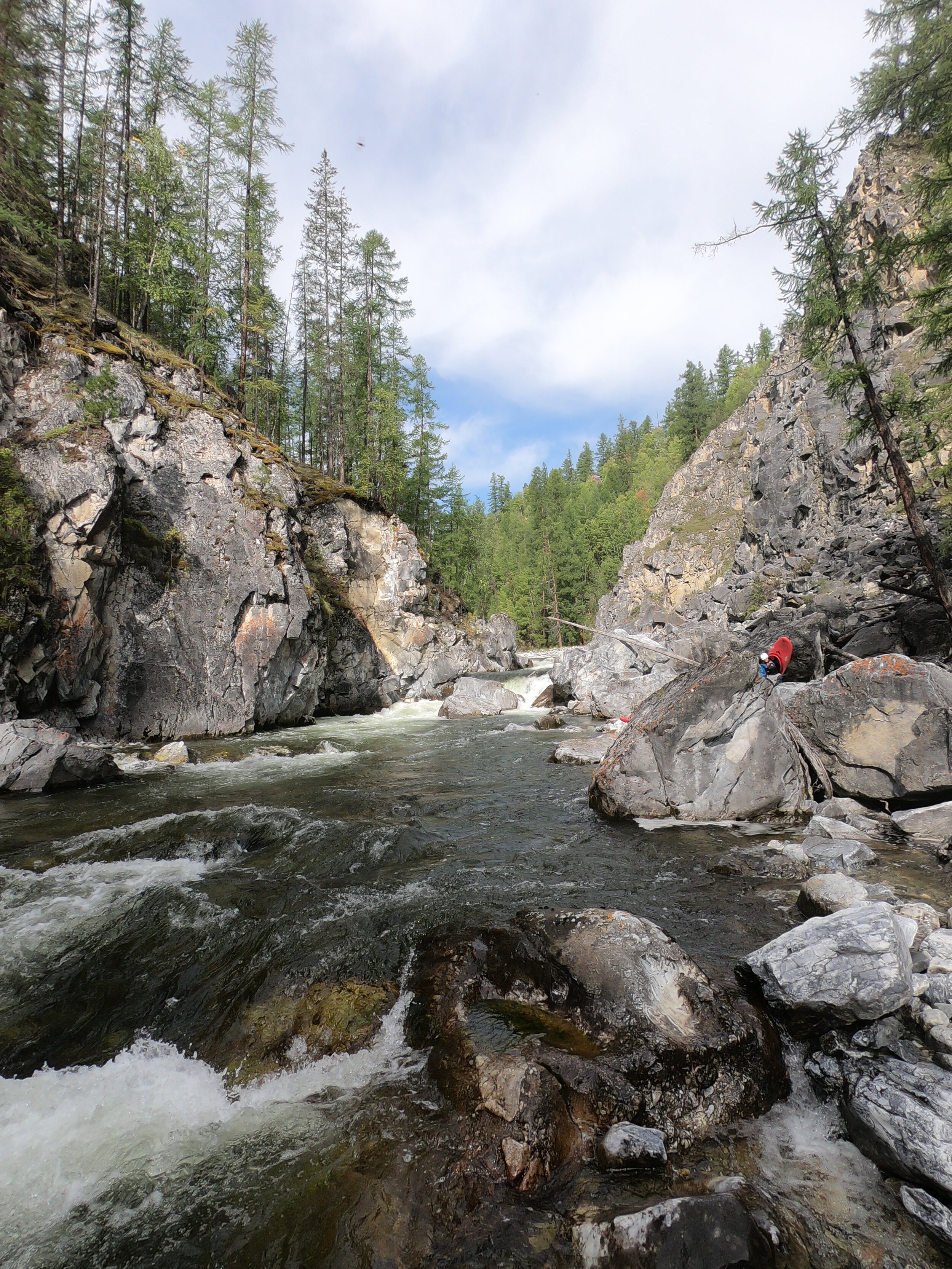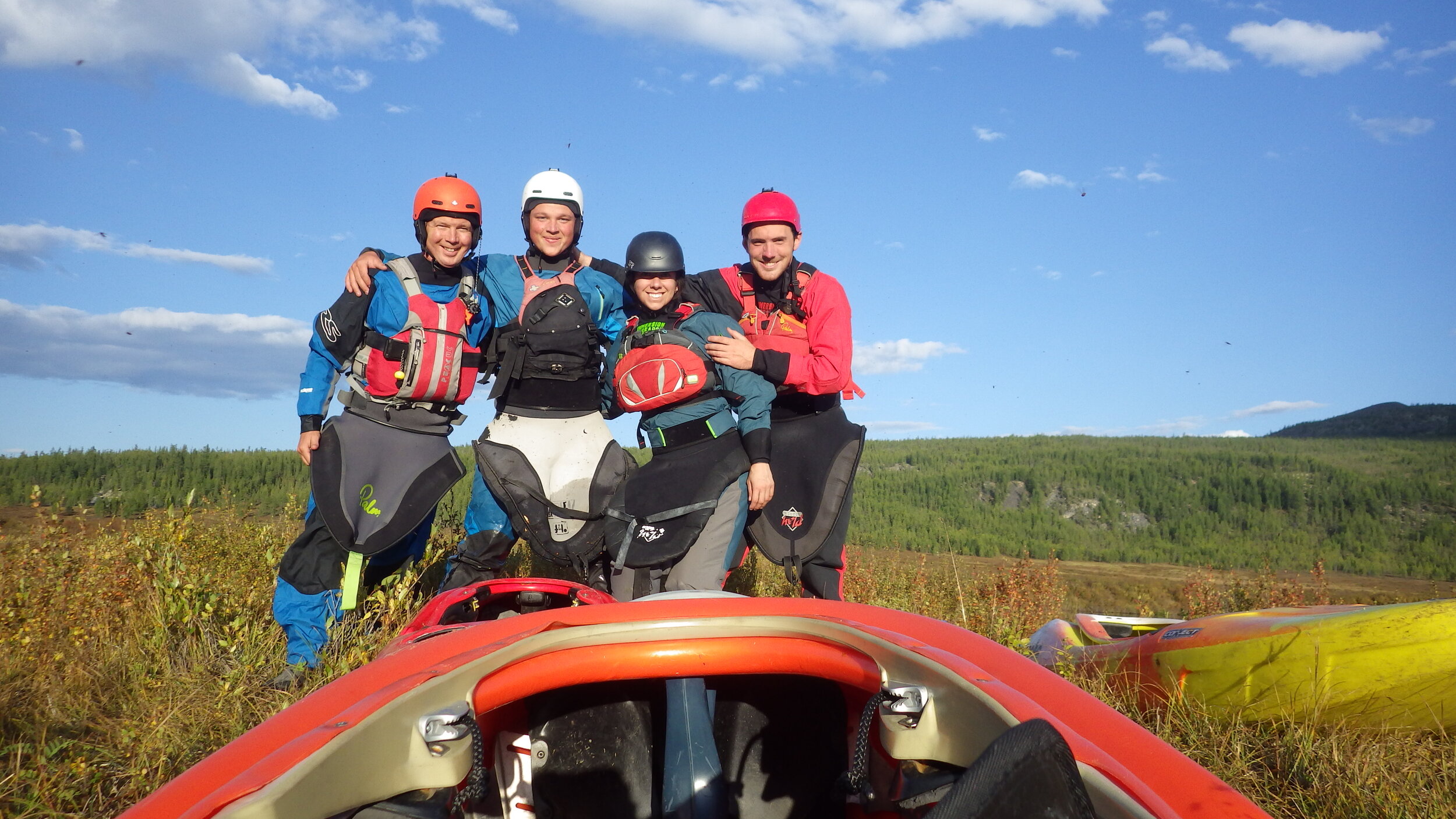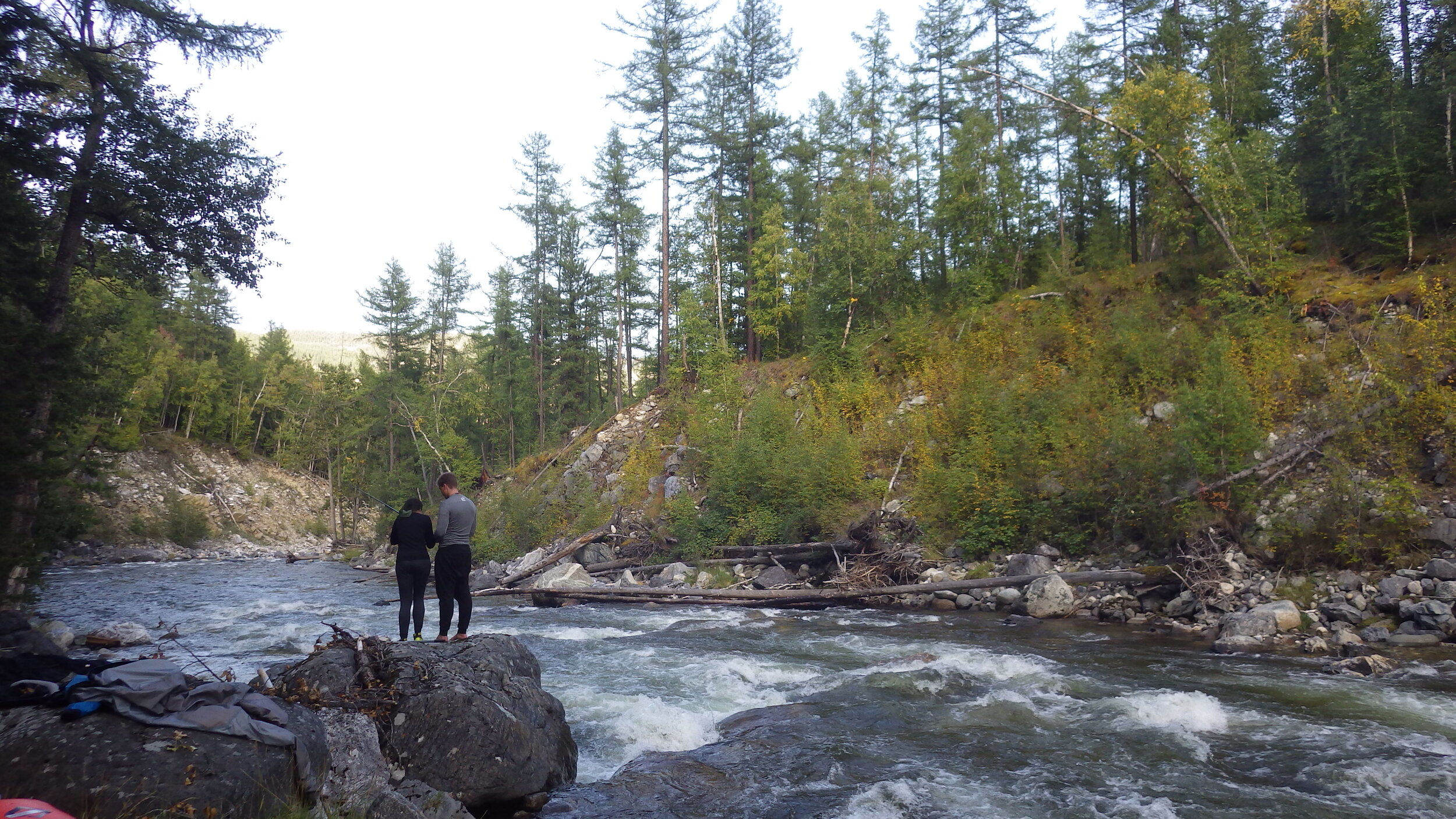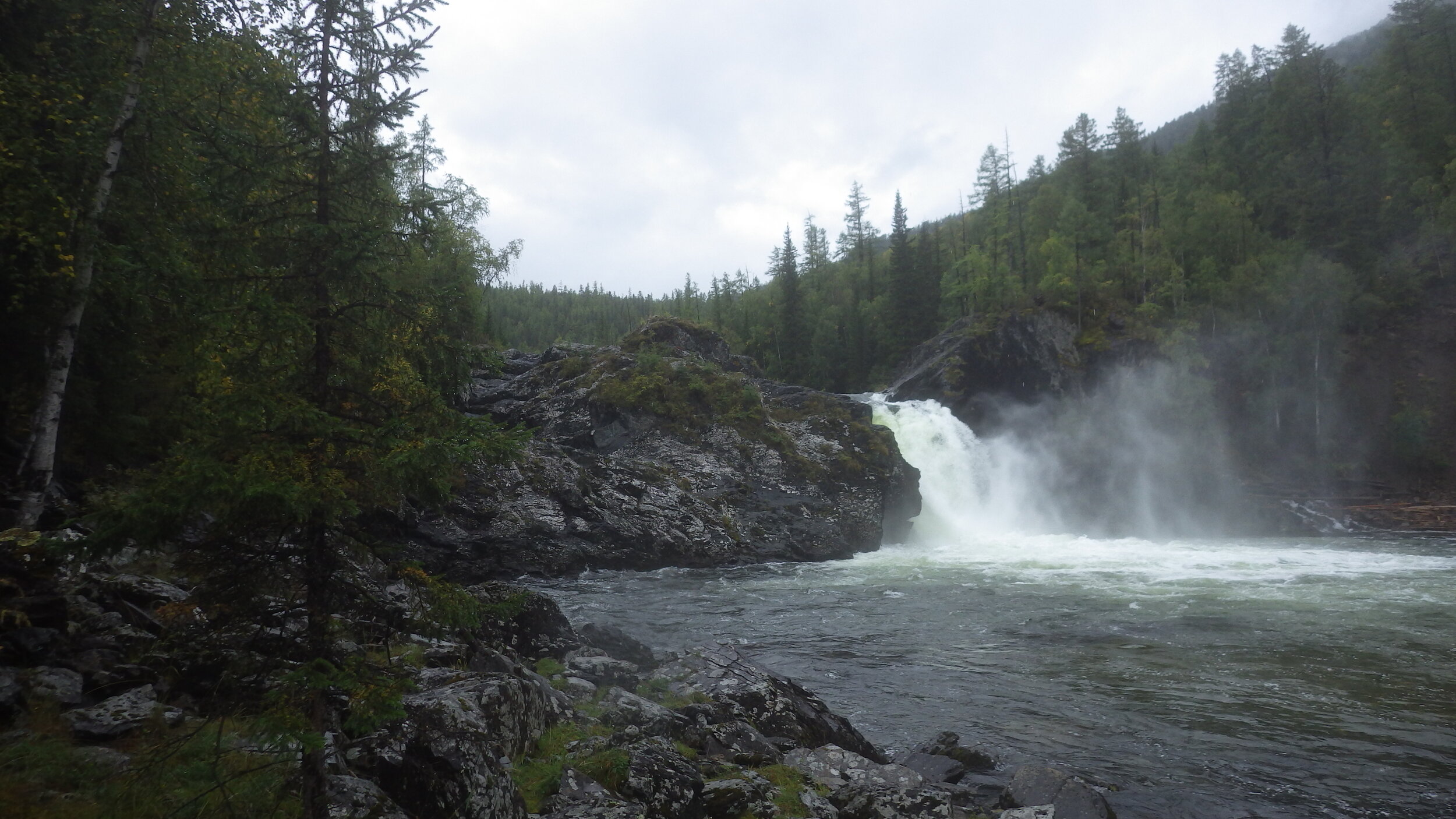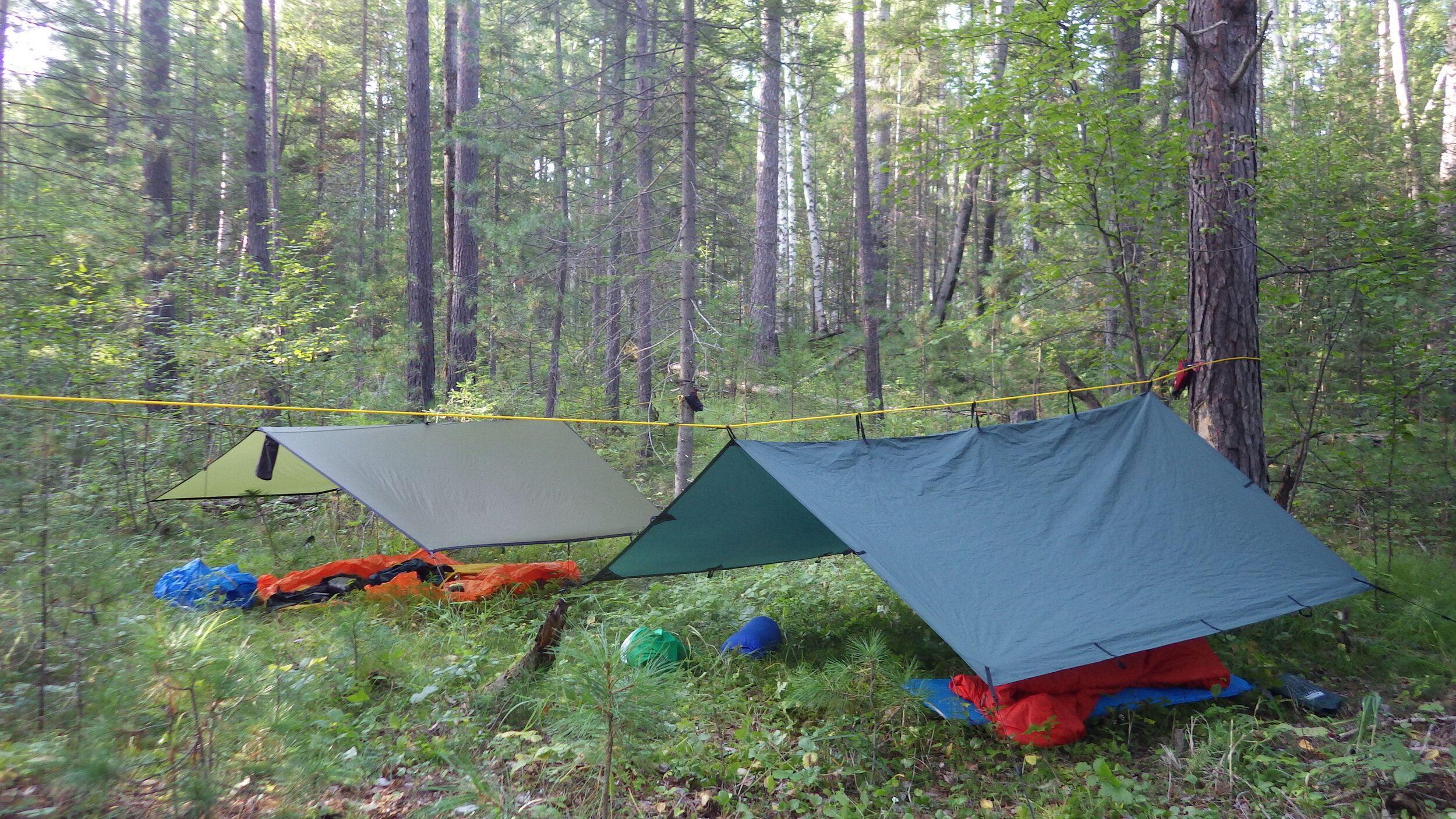Siberian Sayan, Kitoy and Urik Rivers - August 2018 - Trip Report
The trip report has been written by Mark Corti. The best photos are courtesy of Mark Corti, Max Rettenbacher and Leanne Dyke.
This trip report covers the Urik river only (although some of the photos are of the Kitoy river).
Siberia’s got a certain reputation amongst paddlers. Hard whitewater. Remote wilderness. Atrocious weather. Boulder-filled gnarlfests run by vodka-fuelled lunatics. It was, therefore, with some trepidation that I said “yes” when Neil Cox (http://www.neilcoxmisadventures.com) mentioned he had space for another team member on an expedition there. After all, I don’t really like vodka!
After some discussion about the group’s skill levels, and a fairly hair-raising scouting mission on another river by the advance party (a tale for another time), we settled on the Urik. The reports we could find described it as a fairly remote multi-day trip, running at about class III(IV) as it dropped out of the Sayan mountains, and then flattening out for the final days to the take-out.
Neil had found a local fixer who arranged the permits needed to travel in this sensitive border area, plus transport to take us to the put-in. It was a full day’s drive from Irkutsk, much of it over unmade track, so we needed a 4WD vehicle of some kind. The “transport” turned out to be the most fabulously pimped-out minibus I’d ever seen, riding high on giant monster-truck wheels. If you remember the Tamiya “Lunchbox” radio-controlled van from when you were a kid, you’ll know what I mean! Driving out from Irkutsk, the modern city centre gave way to crumbling Soviet-era housing blocks, and then to traditional wooden houses and barns, often still arranged around the kolkhoz, the collective farms created by Stalin. The road deteriorated in sympathy: from a 3-lane motorway to single-land blacktop, becoming more potholed and dishevelled until finally petering out into a rocky track. We stopped at a picturesque waterfall with a beribboned shrine, to propitiate the local deities and ask their blessing on our trip, drinking vodka and bowing our heads.
The monster van did well to start with, but despite the valiant efforts of Oleg, our driver, it was no match for the terrain and it finally sank up to the doors in a bog – luckily only a few hundred metres from the river. It took a good few hours to extricate it, and the sun was just settling onto the horizon by the time it was freed – much later in the day than was prudent to be putting on to an unknown river. Our fixer was adamant that it wasn’t safe for us to camp this close to the road – armed bandits from a nearby village had apparently robbed a previous expedition in this area – and he wouldn’t leave until he’d seen us safely on our way.
Somewhat against our better judgement, we packed hurriedly before full dark fell, and the lengthening shadows saw us floating down a tranquil stream in search of another camp spot. In the event, it was a lovely evening paddle – the hills reflected in the still water of the gently-flowing water, the rocks glowing in the soft golden light of evening. On a quiet bend in the river we pulled out the boats and made camp in the pine forest. A large colony of Siberian hamsters had made their home in the rocks around camp, and their soft squeaking was the soundtrack to our sleep.
The morning came bright and clear, the sun quickly melting last night’s frost. By the time we’d re-packed after the rush of last night, the sun was climbing quickly up a cloudless sky. The river meandered through a pretty valley, wide and shallow. Very shallow, in fact. Soon we were wading through it, floating our boats alongside us, slipping and sliding over the weed-covered rocks which made up the riverbed. It looked idyllic – brightly-coloured boats, clear water, blue skies and green hills – but it was surprisingly hard work, with the gaps in the rocks and the fast-flowing water providing numerous foot-entrapment opportunities. Eventually, imperceptibly, the hills closed in, the river narrowed, and the boats, mercifully, began to float. We were paddlers again.
Once we were floating, the river picked up surprisingly quickly. From a fast-moving class II, it swiftly became a bumpy and continuous III, lots of fun with no let-up. I’d had an enforced last-minute change of boat, and with no time to replace the rusted bolts I was unable to store any gear behind the footplate. This meant that all the weight was in the back of my kayak, making it extremely stern-heavy and pretty unwieldy in the water. Paddling a laden whitewater boat was a new experience for me anyway, and it took most of the morning for me to get used to the handling. Even then I was working pretty hard to get the boat where I wanted it to go. It was definitely not my most elegant paddling day!
I wasn’t the only one making heavy work of it. The river was a grade harder than we’d been expecting and was higher than anticipated for the time of year, and that had led to a couple of swims as things hotted up. Max (a fantastically enthusiastic young paddler from Austria) was making everything look easy, but Neil had discovered the repair he’d made on his split boat wasn’t as waterproof as he’d hoped, and after Leanne head-ruddered down a long stretch of class IV we decided to set an early camp at about 4pm and make a fresh start in the morning.
After an evening of cooking (successful), boat repair (moderately successful) and fishing (entirely unsuccessful), we got back on the river bright and early. The gradient had steadily increased throughout the previous day, and the river was a stiff and unrelenting class IV, occasionally interspersed with harder drops. While inspecting one of these drops, we could see the river churning into a metres-wide slot between sheer cliffs just below us, before dog-legging out of sight. Previous trip reports had spoken of a narrow gorge completely blocked by rockfall, so we were keen to inspect the canyon before attempting it. There was a huge eddy on the left just below the drop, and we agreed to stop there and take a look from the bank. I can’t stress enough how big this eddy was. Gigantic. Enormous. There were even a couple of eddies behind it, in case you somehow missed the first one. It was therefore with considerable chagrin that I sailed past them all after completely fluffing the line, fighting my unwieldy kayak in the swift water as I headed into the gorge. There may have been some bad language. In desperation I threw the boat into a fissure in the sheer cliffs, a half-an-eddy of surging water below a slimy rock chimney to which I clung grimly. I could still see the rest of the team, gesticulating at me from the eddy - fortunately their words were lost in the roar of the rapids! The water in the gorge wasn’t hard, but it was extremely fast-moving with no eddies at all. I couldn’t see far downstream, and with the knowledge of a possible river-wide syphon in there somewhere I wasn’t keen to run it blind. I sat in my slimy chimney, the boat surging beneath me in the not-really-an-eddy, clutching at the cold rock and reflecting that, on balance, I really would have preferred to be in the big eddy above the gorge, in the sunshine with my friends.
After half an hour – a very long, lonely half-an-hour – boats reappeared in the eddy above. Max, the strongest paddler in the group, paddled confidently into the canyon, and I gratefully followed peeled out behind him to make an eddy and beach a short distance downstream. They’d inspected from the top and located the rockfall. A huge rectangular boulder had fallen from the cliff and completely blocked the river – almost the whole mass of water disappeared beneath it with nary a gurgle, before emerging a few metres away into a wide, calm pool.
Once we’d negotiated the blockage and emerged back into the sunshine, the river resumed it’s previous character – long, sloping rapids and powerful water, pine forested slopes to either side – and we pushed on until dusk, portaging a couple of nastier drops, before finding a camp spot for the night. It had been a long and eventful day.
We’d dropped about 550m in 40km over the last couple of days, but from this point on, the river widened and the gradient eased off as we left the mountains behind. The final feature was a magnificent waterfall, the entire river cascading into freefall and disappearing into a cloud of spume. The ever-enthusiastic Max was keen to run it, but after a long time peering into the roaring depths, discretion prevailed and we all portaged to the calm waters below.
Despite the drizzle, we made good time through fun but easier rapids for the next few days, and started to see more signs of habitation – hunters and fishermen for the most part, but we also saw a couple of rafters, riding a cataraft they’d made themselves. They had a pair of inflatable pontoons, lashed together with saplings and old bicycle inner-tubes, with paddles made from aluminium sheet riveted to poles and inflatable life-jackets. We shared a bothy with them one night, swapping slugs of our whisky for salami and cheese, and talking around the fire in broken Russian and English, as well as a fair amount of sign language and charades. It turned out that one of the rafters had actually leapt off the waterfall on a previous trip here, but since he’d broken both legs while doing so we didn’t feel too bad opting for the portage ...
By the final day, the split in Neil’s boat was fully open, despite his best efforts each night with the stove and a hot knife, and we were stopping every hour to empty it. It must have been exhausting work, but the river was still flowing at a reasonable pace, and we made the take-out as planned on the final day. The monster van arrived on schedule, and in a few short hours we were sitting in a good restaurant in Irkutsk, freshly scrubbed and slightly discombobulated, swapping stories of our adventure and planning the next.
